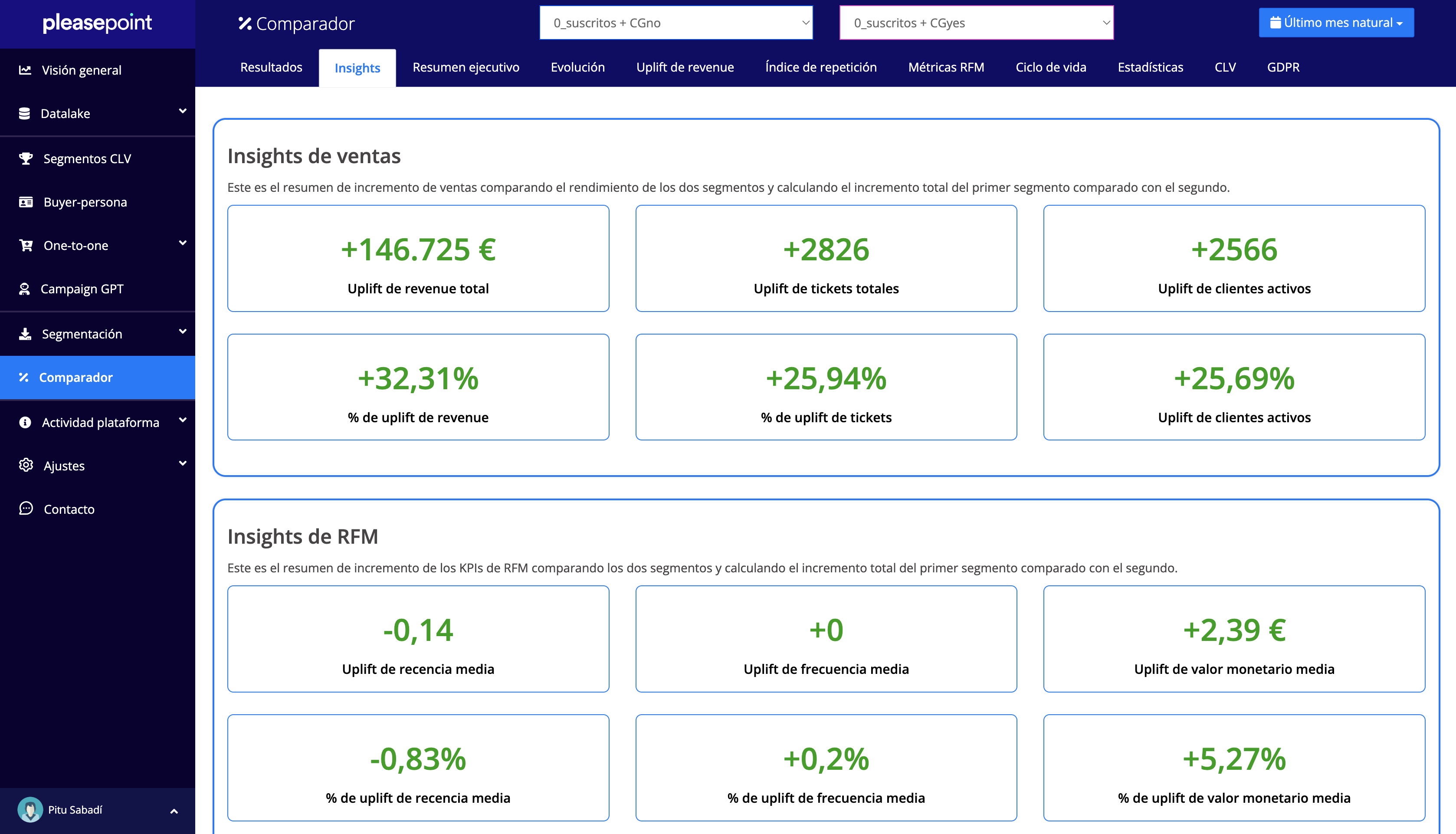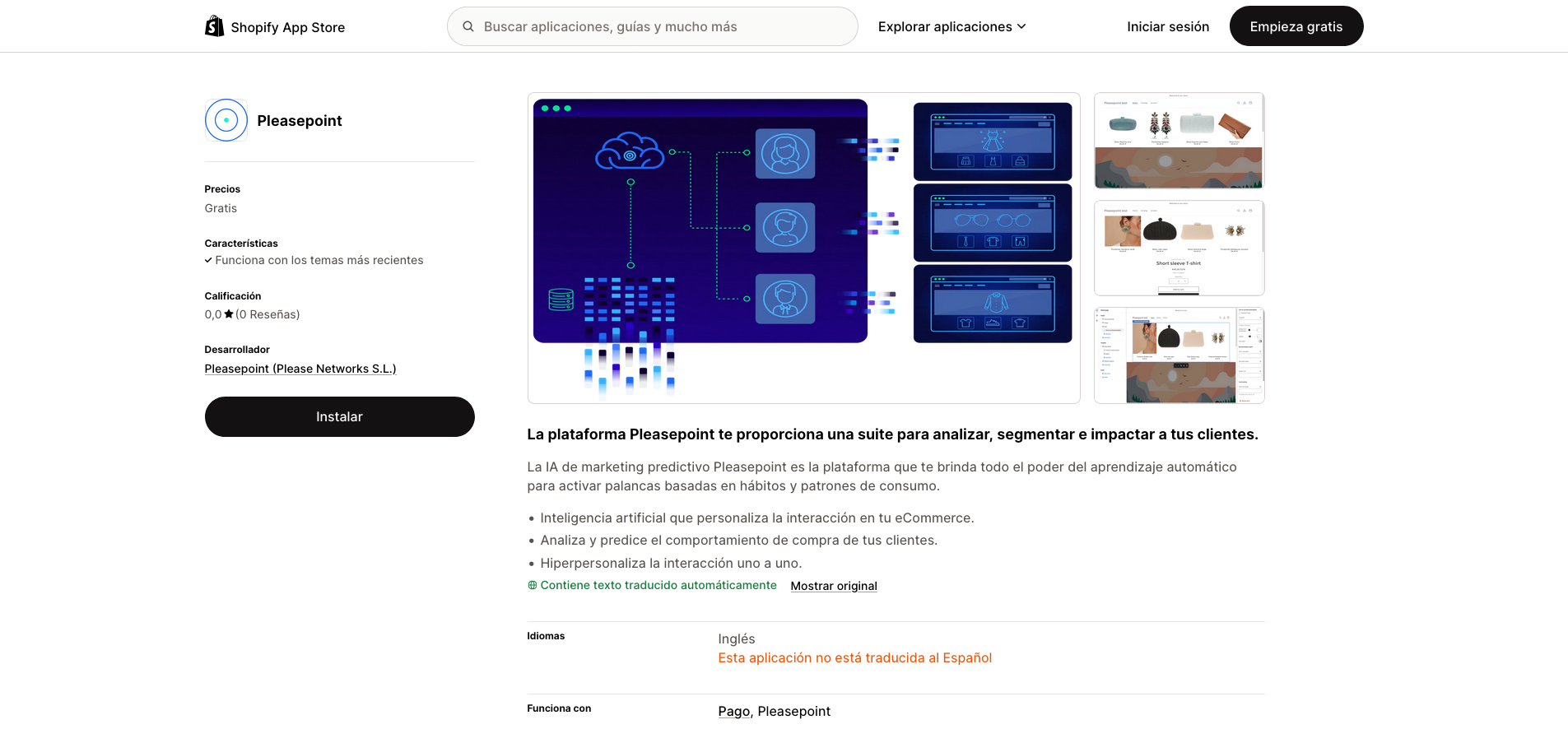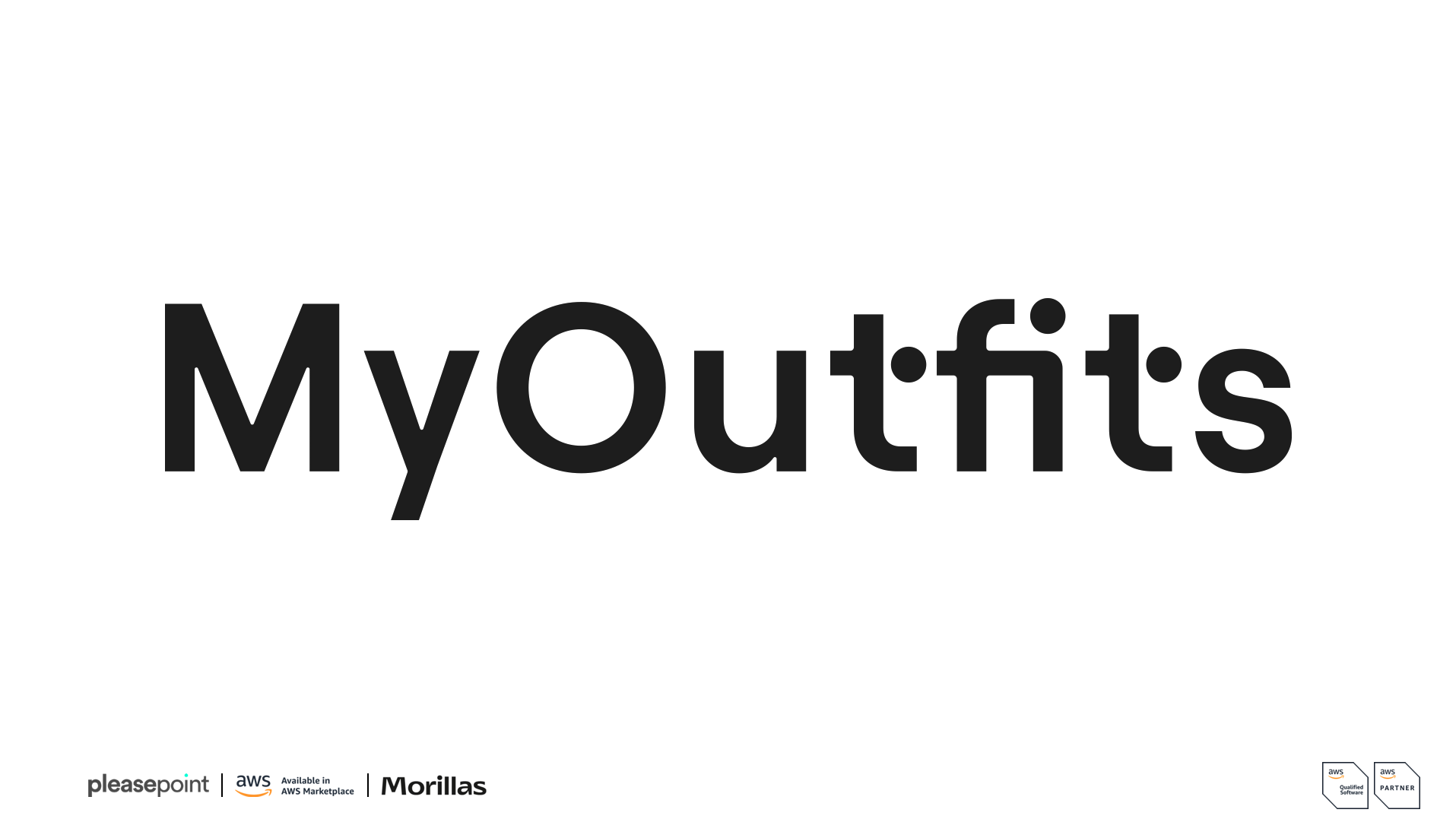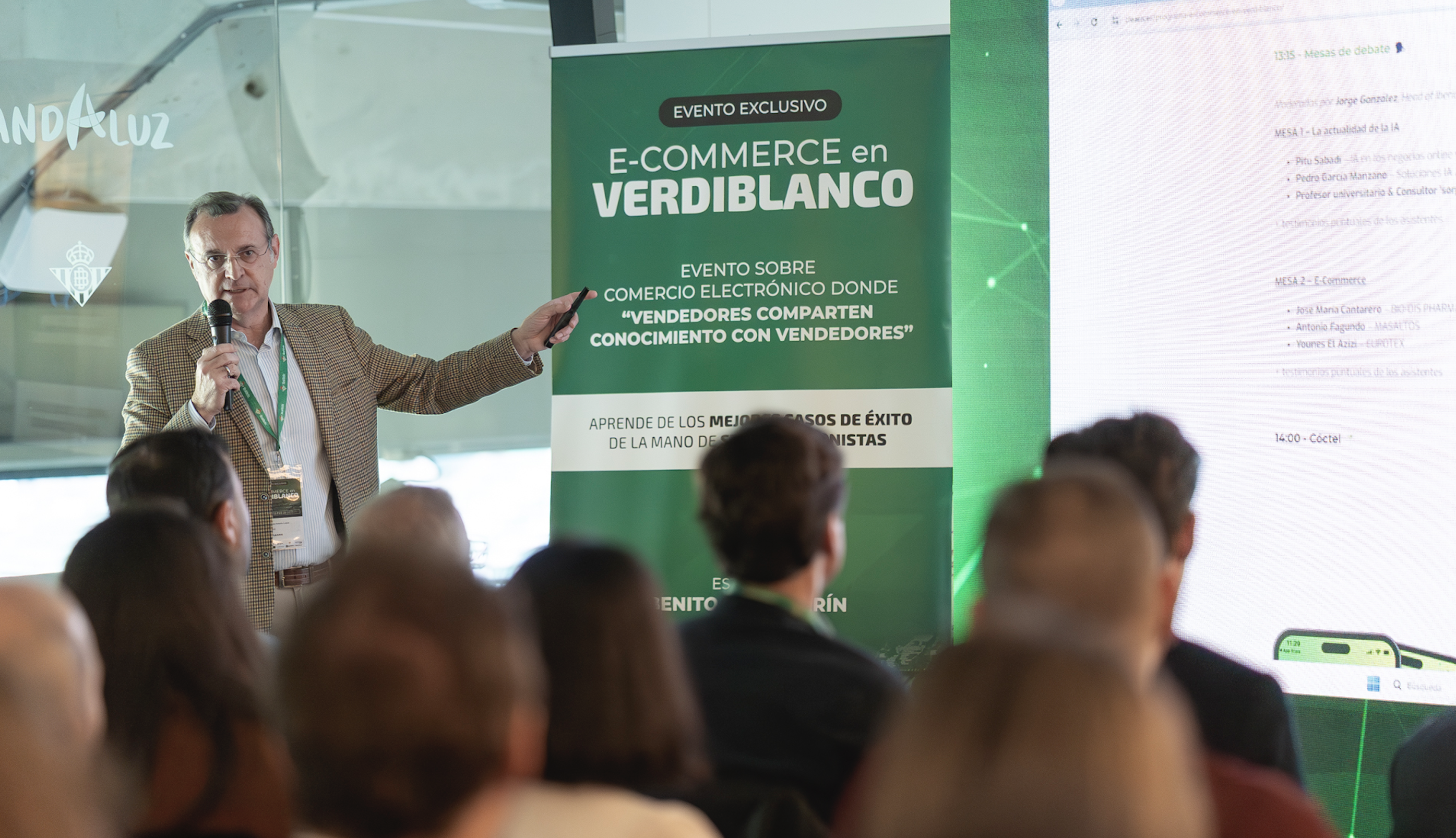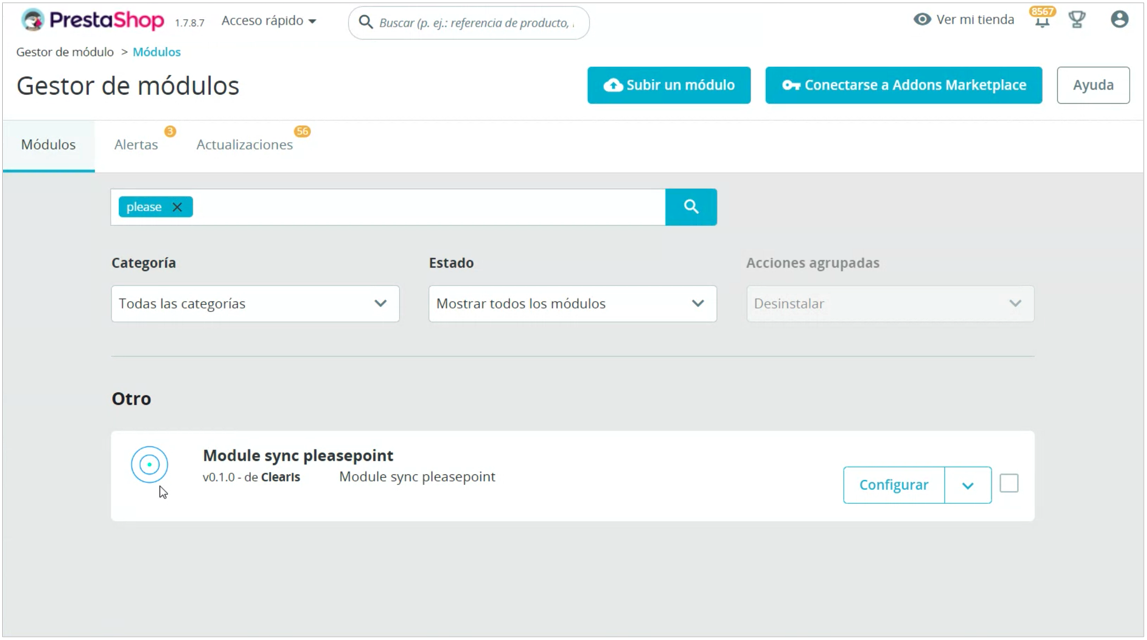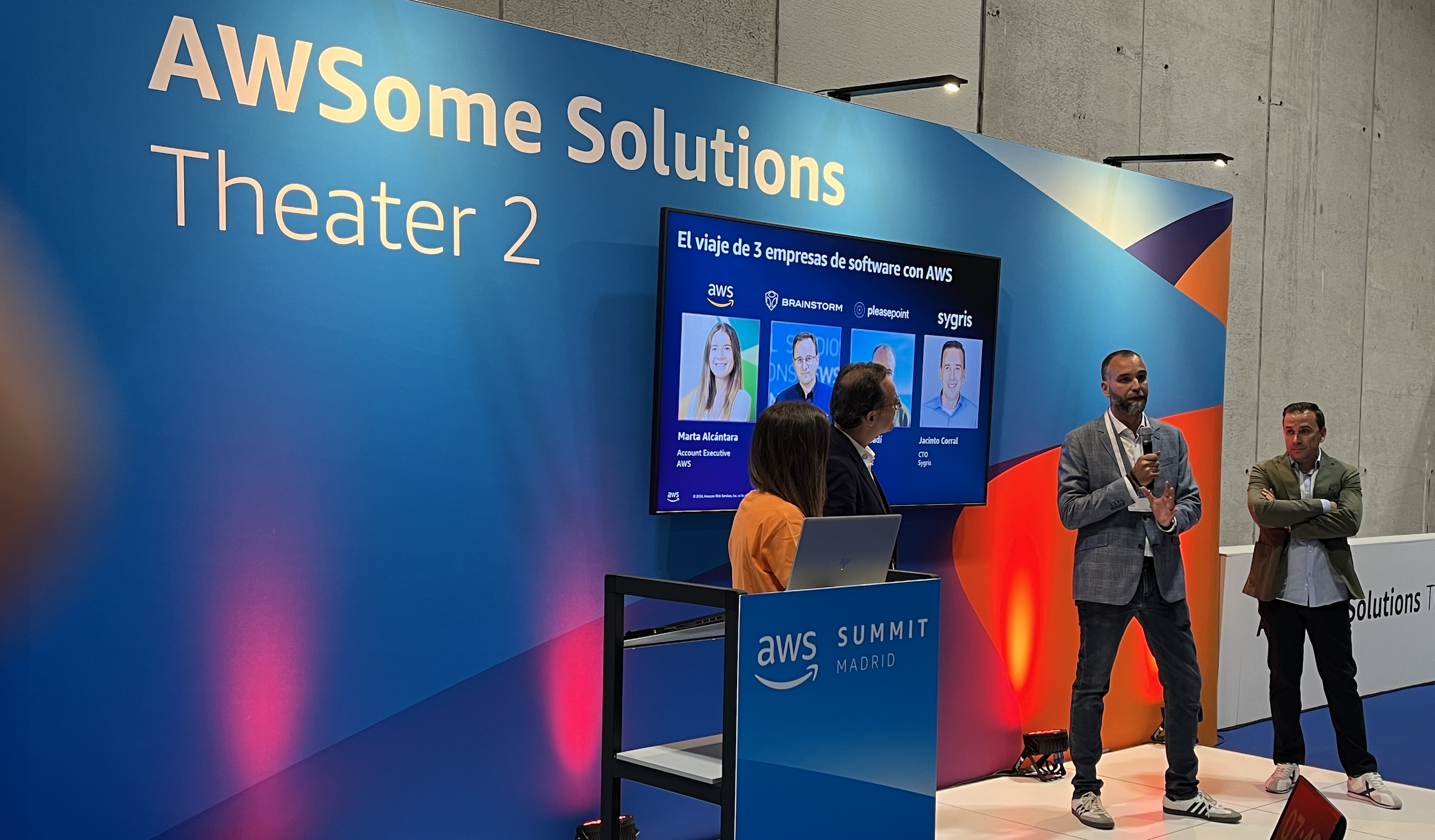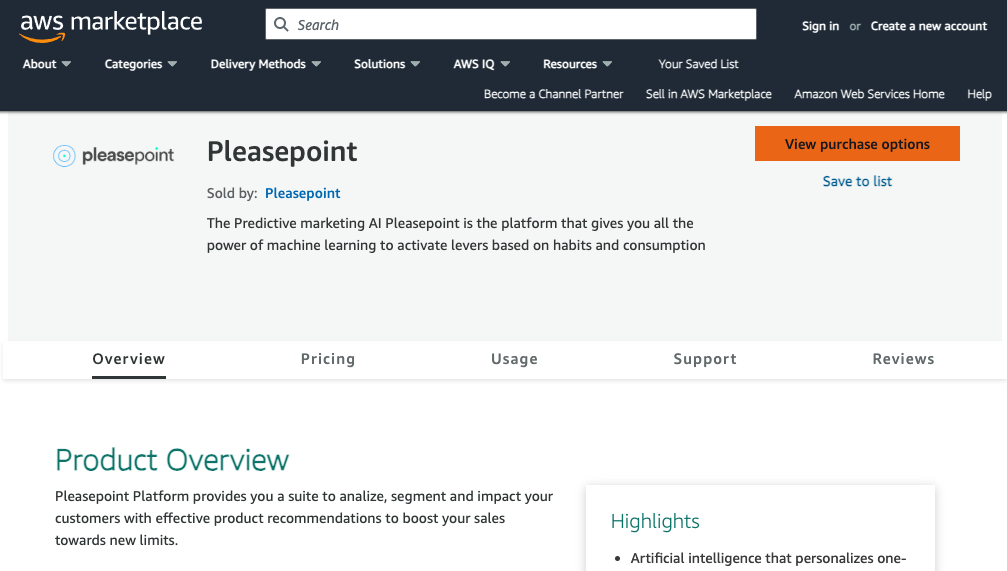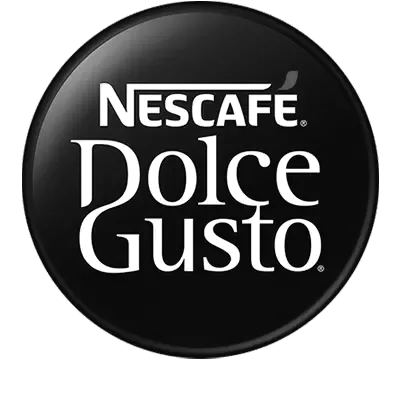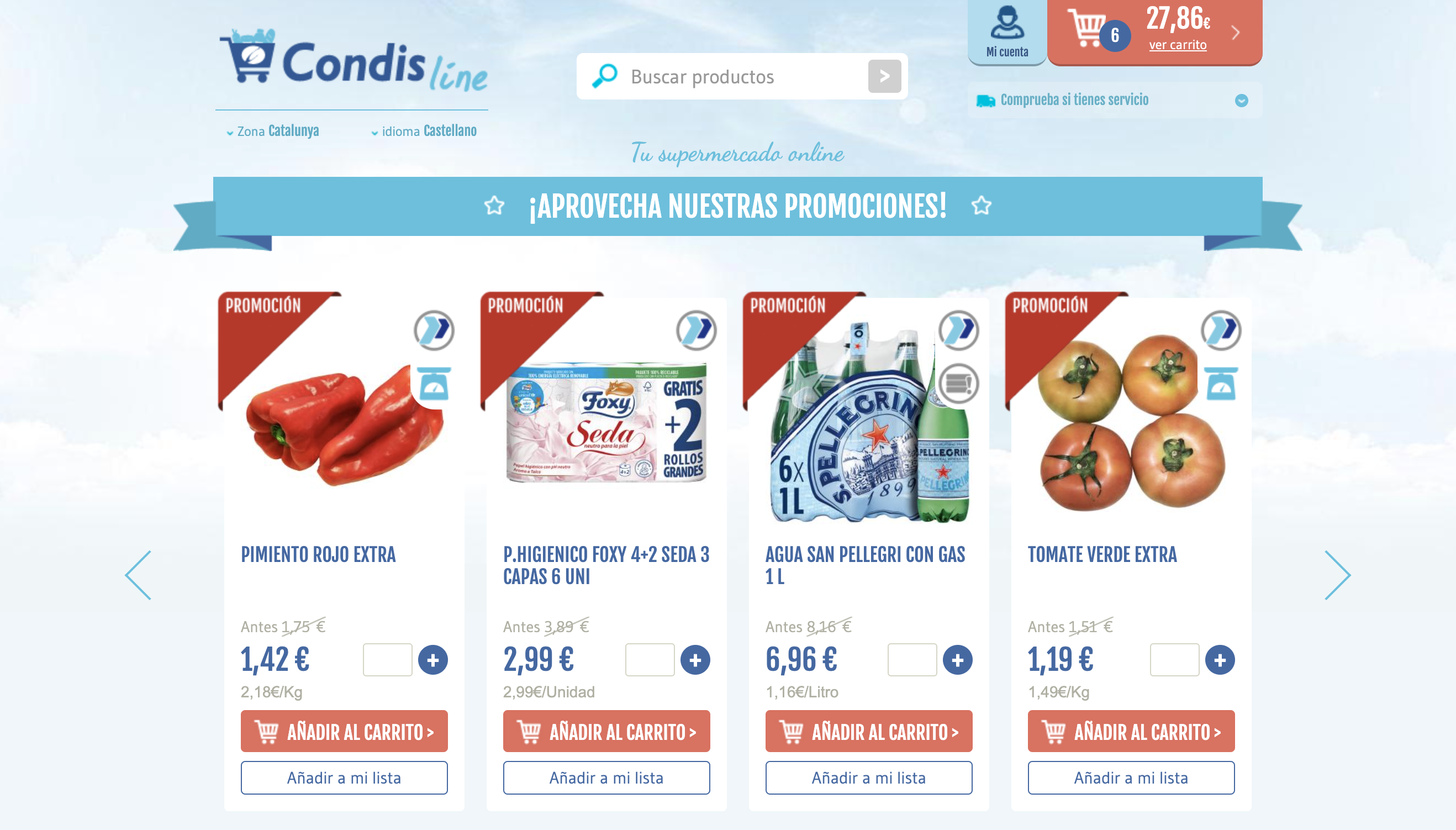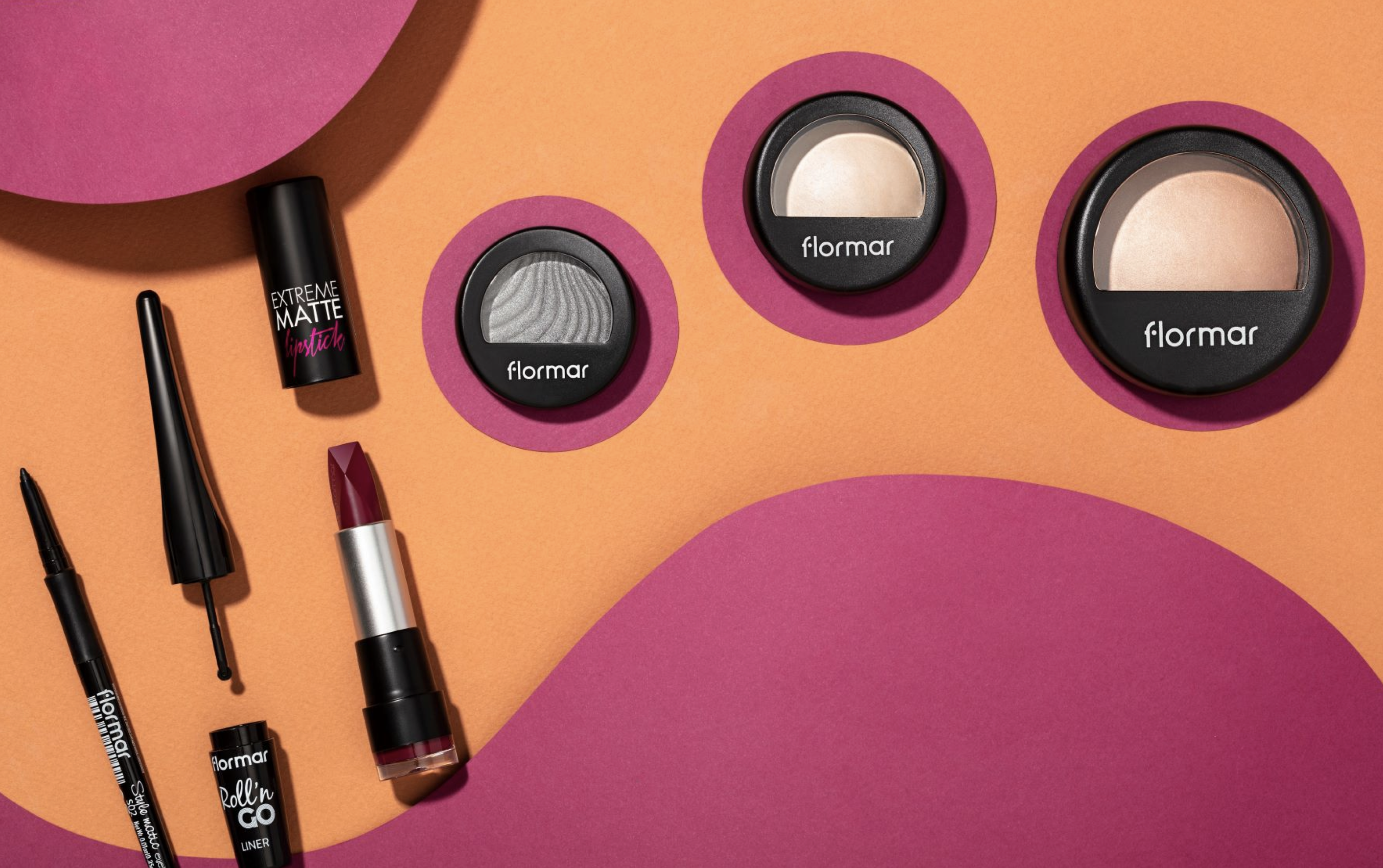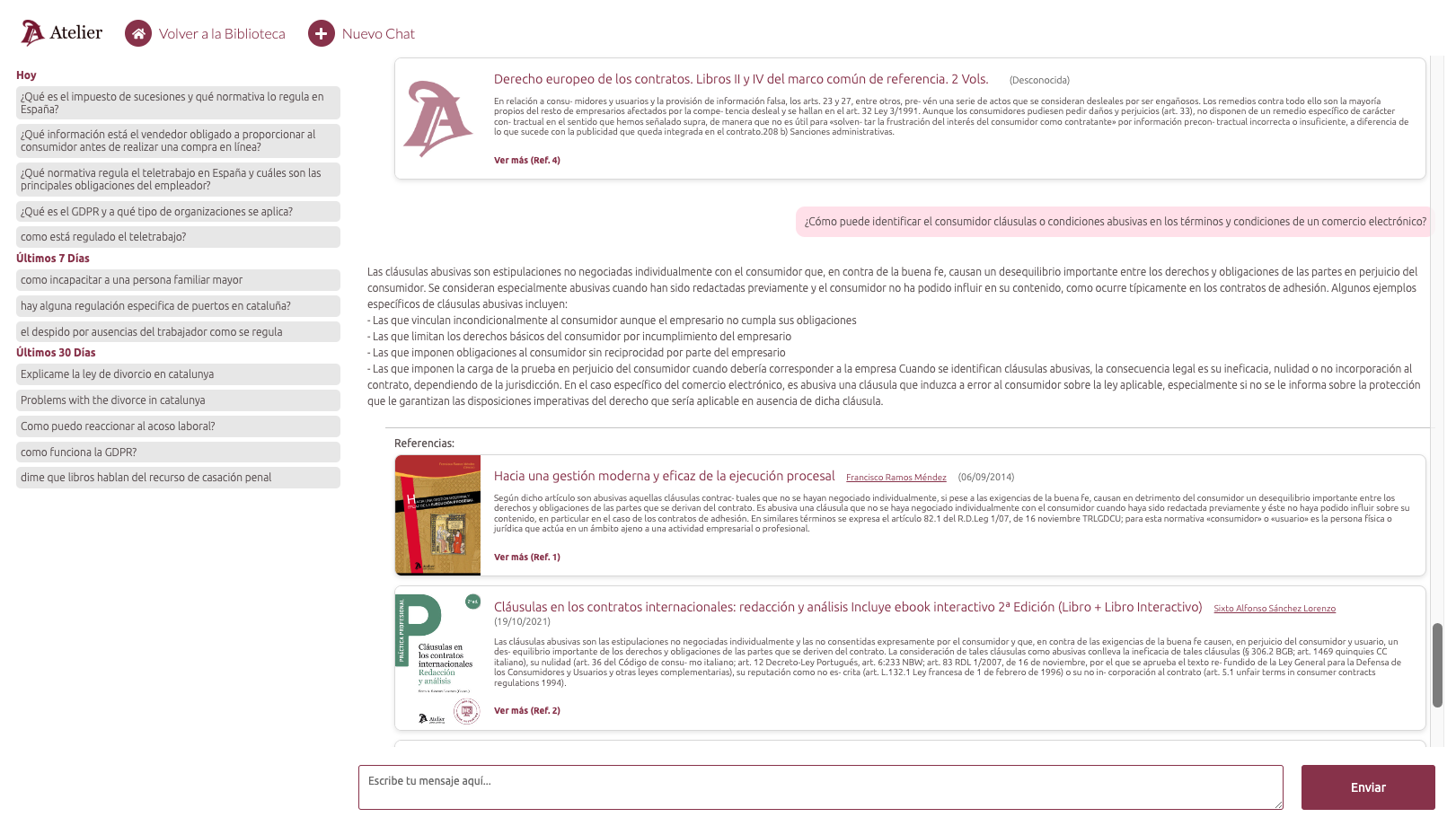In a world where competition in e-commerce is fierce, personalization emerges as a crucial differentiator to captivate and retain customers.
In this post, we will reveal the importance of personalizing communications and experiences based on each customer’s peculiarities and consumption habits. Additionally, we will show how Pleasepoint's powerful artificial intelligence becomes your strategic ally in achieving this level of personalized perfection.
Personalization goes beyond mere courtesy. It involves recognizing and addressing the uniqueness of each customer, creating an emotional connection.
Tailoring content and offers to their preferences not only increases satisfaction but also boosts conversion. Personalization fosters loyalty by building an experience that resonates, driving return visits and recommendations.
Personalization is the art of treating each customer as a unique individual, catering to their needs and desires exclusively. It’s more than just a gesture; it’s a powerful strategy that establishes an emotional bond.
As you tailor your content and offers according to preferences, you not only increase satisfaction but also open the door to more frequent conversions and lasting loyalty.
Now, the crucial question is: how can you understand and anticipate what each customer desires?
Before answering the question, I’ll show you the results from one of our clients last June.

This client uses purchase propensity to personalize:
- Communication frequency according to their consumption habits.
- Types of products to communicate.
- Active promotions for specific products and bundles.
The results we show are the outcome of comparison with a control group, in this case, 5%, comparing sales KPIs and tickets per 1,000 customers in each segment.
In this case, the control group remains unaffected by personalization, only impacted by general campaigns and basic loyalty program journeys.
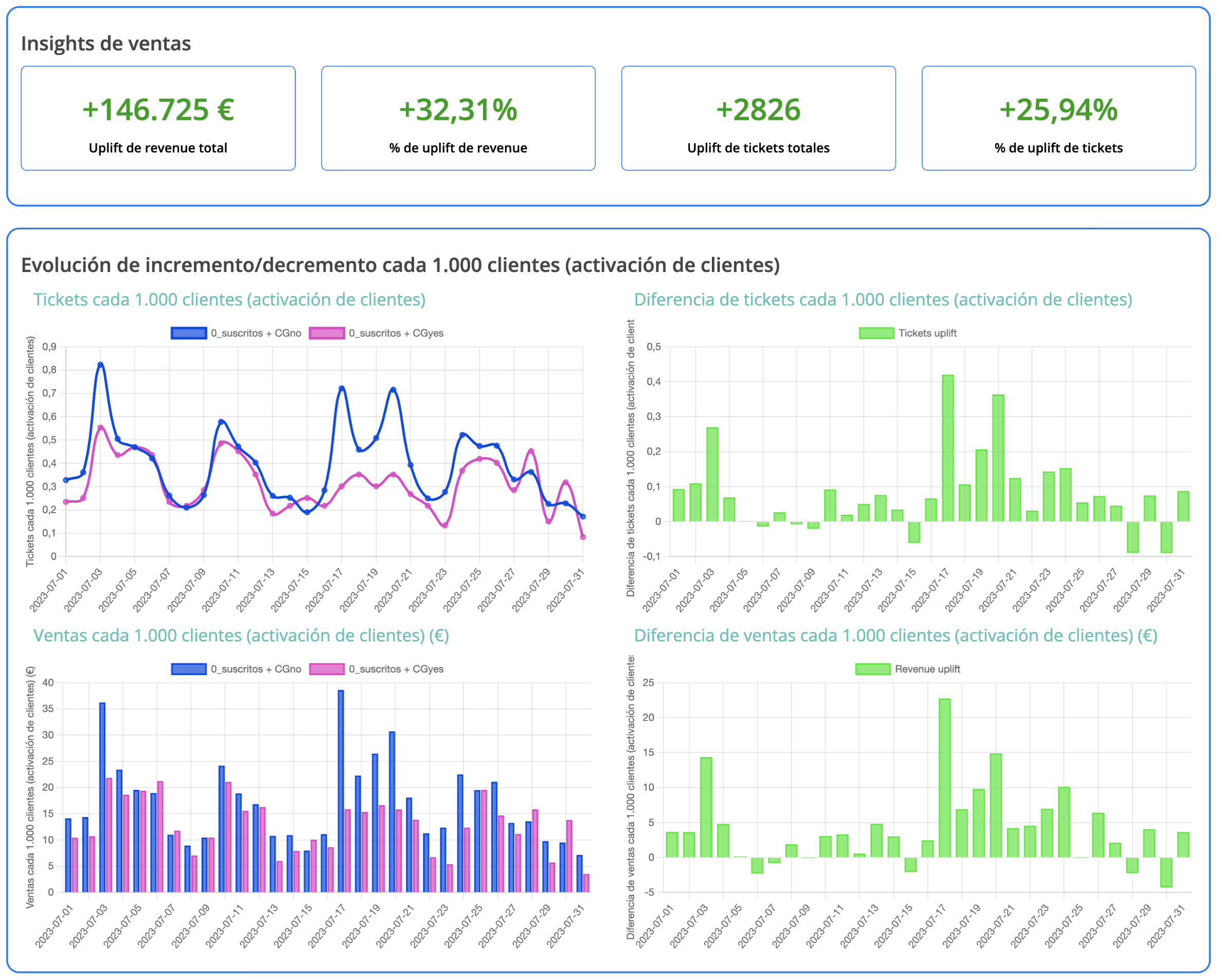
These are the results obtained during last June:
- +25% increase in the total number of active customers, an increase of 2,566 customers.
- +25% increase in the total number of tickets, with a total of 2,826 additional tickets.
- +32% increase in sales, amounting to an increase of €146,725 in sales.
If you want to learn how to create an effective control group following best practices in the CRM context, we recommend this post from our blog: The control group: the key to measuring the impact of your CRM actions.
Decoding purchase propensity.
The key lies in purchase propensity. Imagine having a partner who can accurately predict what your customers want to buy before they even know it. Welcome to purchase propensity. Purchase propensity is the core of effective personalization. Essentially, it’s the tool that predicts customer behavior.
Purchase propensity is a key concept in the marketing world that refers to the likelihood or tendency of an individual to make a purchase based on their behavior, preferences, and characteristics. It is based on analyzing historical patterns and current data to predict how likely a potential customer is to take a specific buying action in the future.
Through advanced algorithms and data analysis, Pleasepoint predicts the likelihood of a specific customer making a purchase. This gives you the ability to address individual needs with perfectly resonating messages and offers.
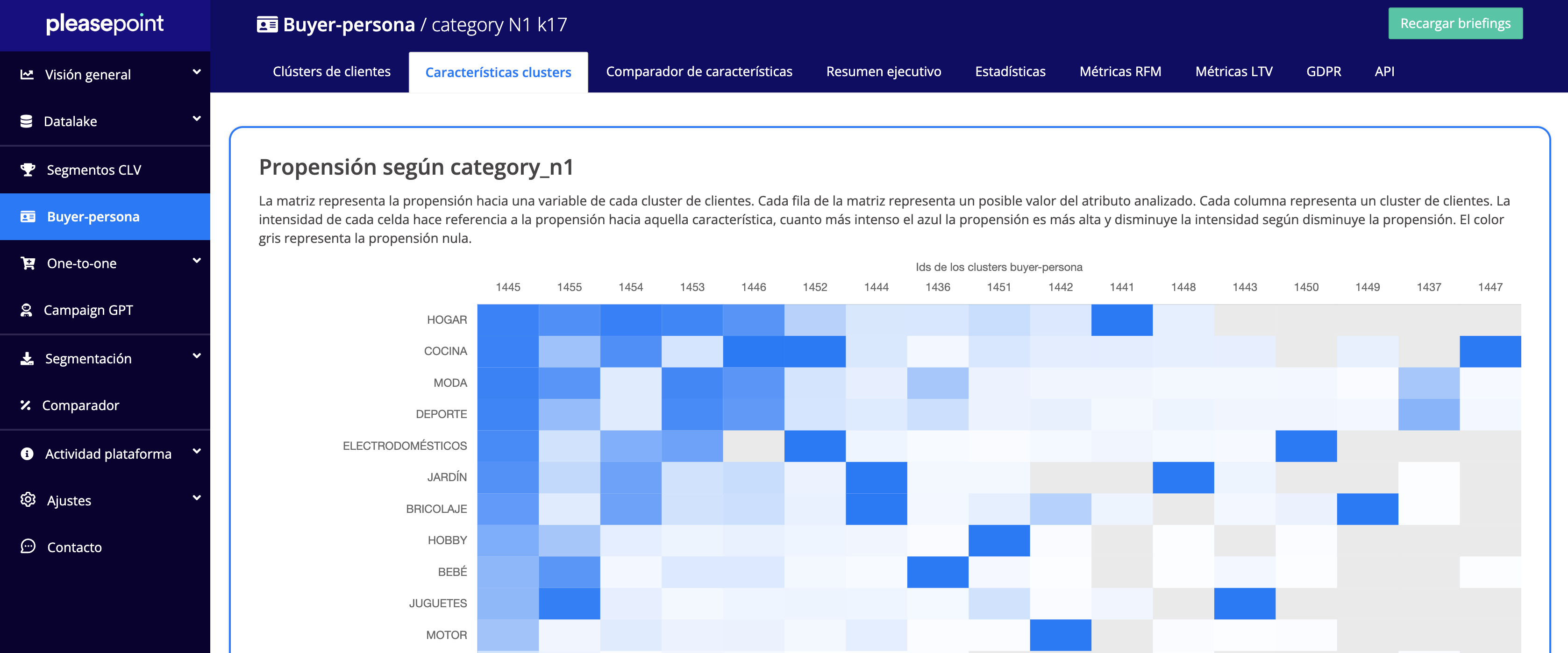
Pleasepoint's Buyer Persona module performs these calculations for you. How can I read the purchase propensity matrix?
- Each row of the matrix is a feature.
- Each column is a customer cluster. Every customer belongs to one cluster and only one cluster.
- The color of the cell indicates propensity. The more intense the blue, the higher the propensity. Gray indicates no propensity.
By using purchase propensity, marketers can assess the level of interest and likelihood of conversion for a potential customer. This allows marketing strategies to be personalized for specific segments and efforts directed toward those with a high likelihood of purchasing.
Purchase propensity has become a fundamental tool for tailoring marketing and e-commerce strategies to individual customer preferences.
Its ability to predict future behaviors based on historical data enables brands to deliver highly personalized and relevant experiences, leading to increased conversion, retention, and customer satisfaction.
Using purchase propensity in email marketing
In email marketing, purchase propensity becomes a powerful weapon. By analyzing the subscriber's past actions, such as email opens, link clicks, and previous purchases, it’s possible to predict the type of content and offers that will resonate most effectively.
Purchase propensity algorithms can help determine when to send emails, which products to highlight, and what specific messages to use, resulting in higher open and conversion rates.
Using purchase propensity in eCommerce
In eCommerce, purchase propensity is essential for optimizing the customer experience. Websites can track user behavior, such as product categories visited, products added to the cart, and purchases made.
Using this information, they can personalize product recommendations, display relevant offers, and send abandoned cart reminders. This maximizes the chances that visitors will convert into buyers and improves customer retention by presenting them with what they truly want.
Purchase propensity for product types.
Not all customers are the same. Some may be captivated by shiny red shoes, while others dream of a new camera. This is where purchase propensity for specific products comes into play.
This unique feature of Pleasepoint thoroughly analyzes past buying behavior and picks the products that most appeal to each customer. The result? Personalized offers that increase relevance and conversion potential.
Check out these examples from different industries.
1. Purchase propensity in the fashion industry.
Example of customer classification based on purchase propensity for various product categories in a women’s fashion brand.

Use purchase propensity to personalize communications, featured products, and promotions. By knowing individual preferences, you can tailor communication to each customer.
Here are some examples of personalization based on purchase propensity for the fashion industry:
- Send complete outfit recommendations based on each customer’s purchase history and style.
- Personalize emails with discounts in clothing categories they frequently buy from.
- Display complementary accessories to the products viewed on the website.
- Send birthday messages with exclusive discounts in their preferred categories.
2. Purchase propensity in the supermarket sector.
Example of customer classification based on the type of products they purchase. In this case, we show the top level of product categories, although you could work at any level of the product hierarchy.

The food and supermarket sectors, due to their high recurrence, are ideal for personalization projects, allowing levers to be activated to improve repeat purchases, cross-selling/upselling, and product replenishment actions.
Here are some examples of how to use purchase propensity in supermarkets:
- Offer specific discounts and coupons on a customer’s favorite products.
- Send product recommendations based on previous purchases and consumption habits.
- Personalize recipes and food suggestions according to dietary preferences.
- Send automatic reminders to replenish frequently purchased items on their shopping list.
3. Purchase propensity in the sports sector.
Example of customer classification based on the type of products they purchase in the sports sector. This is an ideal sector for personalization, offering spectacular results by leveraging consumption patterns.

This sector allows you to work with various propensity axes: product hierarchy, brand, sport, gender... It’s an ideal sector for personalization and will soon become indispensable.
Here are some examples of personalization based on purchase propensity in the sports sector.
- Recommend sports equipment and accessories based on the customer’s preferences and sports activities.
- Send alerts for product launches related to the sports the customer practices.
- Personalize offers and exclusive discounts based on each customer’s preferred brands.
- Provide relevant content, such as training routines and specific tips for the customer’s preferred sport.
4. Purchase propensity in the DIY sector.
Example of customer classification in the DIY sector. Being both a professional and amateur sector, personalization has a long way to go.

What are you waiting for to start personalizing your offer for each customer?
Here are some examples of personalization for the DIY sector:
- Suggest DIY projects based on the customer’s previous purchases and preferences.
- Send reminders to purchase specific supplies for ongoing projects.
- Provide recommendations for complementary tools and materials based on the customer’s previous purchases and projects.
- Offer personalized tutorials and guides for DIY projects related to the customer’s interests.
5. Purchase propensity in the baby sector.
Example of customer classification based on various product categories in the baby sector. This sector is perfect for personalization, given its repeat purchases and the rapid growth of children.

Understanding your customers’ purchase patterns allows you to identify and exploit the best opportunities, generating greater repeat purchases among your customers.
Here are some examples of personalization in the baby sector based on purchase propensity:
- Recommend baby products based on the child’s age and development stage.
- Remind and offer replenishment of essential baby products at strategic times.
- Send special offers on baby products according to the customer’s needs and preferences.
- Provide educational content and personalized tips for parents according to the baby’s age.
5. Purchase propensity in the toy sector.
Classification of customers based on purchase propensity for various categories in an example from the toy sector. Like the previous sector, toys are an ideal example for improving repeat purchases through hyper-personalization of content.
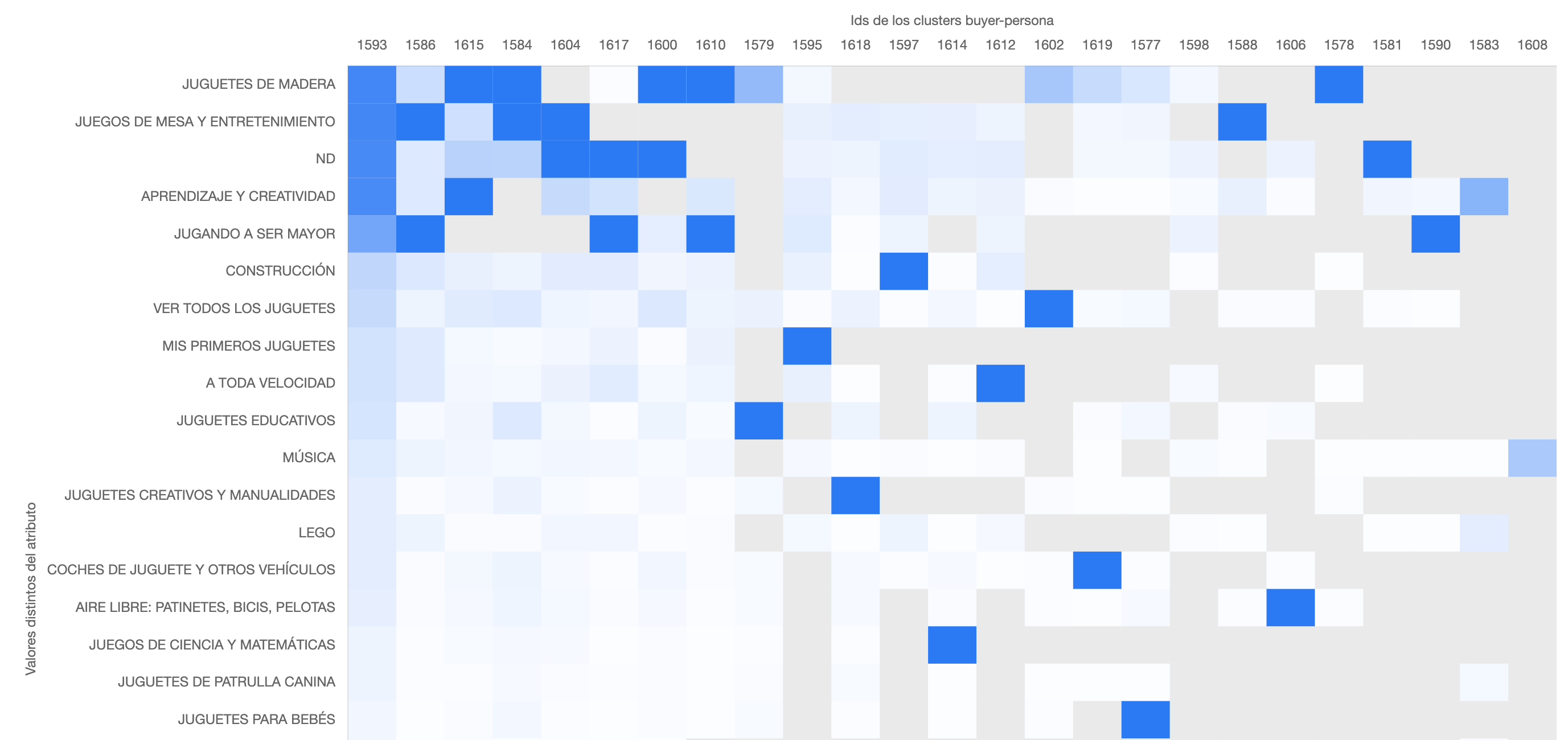
With this information, you can personalize the content of your CRM actions, product recommendations, segment promotions, and transform the relationship with each of your customers into a unique experience.
Here are some examples of how to act on purchase propensity information in the toy sector:
- Suggest toys based on the child’s age and preferences for a more relevant play experience.
- Send special offers on toys based on previous purchases and special occasions.
- Provide recommendations for games and toys related to the customer’s previous interactions and purchases.
- Create personalized wishlists and birthday reminders for the children.
5. Purchase propensity in the cosmetics sector.
Example of customer classification based on purchase propensity across different product axes in an example from the cosmetics sector. The repeat purchase rate in this sector is high, and personalization can significantly increase your campaign’s ROI.

By working on propensity by axis, you have a clear content line to offer each customer and the opportunity to work on relevant cross-selling actions so that they progressively buy from all possible axes.
Here are some personalization examples for the cosmetics sector:
- Recommend skincare products based on the customer’s skin type and specific concerns.
- Send exclusive offers on makeup products based on the customer’s skin tone and style preferences.
- Provide educational content on beauty trends and self-care according to the customer’s interests and experience level.
- Create personalized facial care routines based on purchase habits and individual needs.
Price sensitivity: a strategic revelation.
We all have a threshold for spending.
Price sensitivity is the study of how consumers react to different price ranges. Pleasepoint goes beyond knowing the average price; it identifies those customers who are particularly price-sensitive.
With this information, you can offer specific promotions that make these customers feel valued, thereby increasing the likelihood of a successful conversion.
Price sensitivity shows how consumers react to price changes. High price sensitivity means that a small price change can have a big impact on demand, while low price sensitivity indicates that price fluctuations have minimal effect on demand.
With Pleasepoint, you can classify your customers based on their price sensitivity easily and automatically.
Check out this classification of 8 customer clusters based on their price sensitivity:
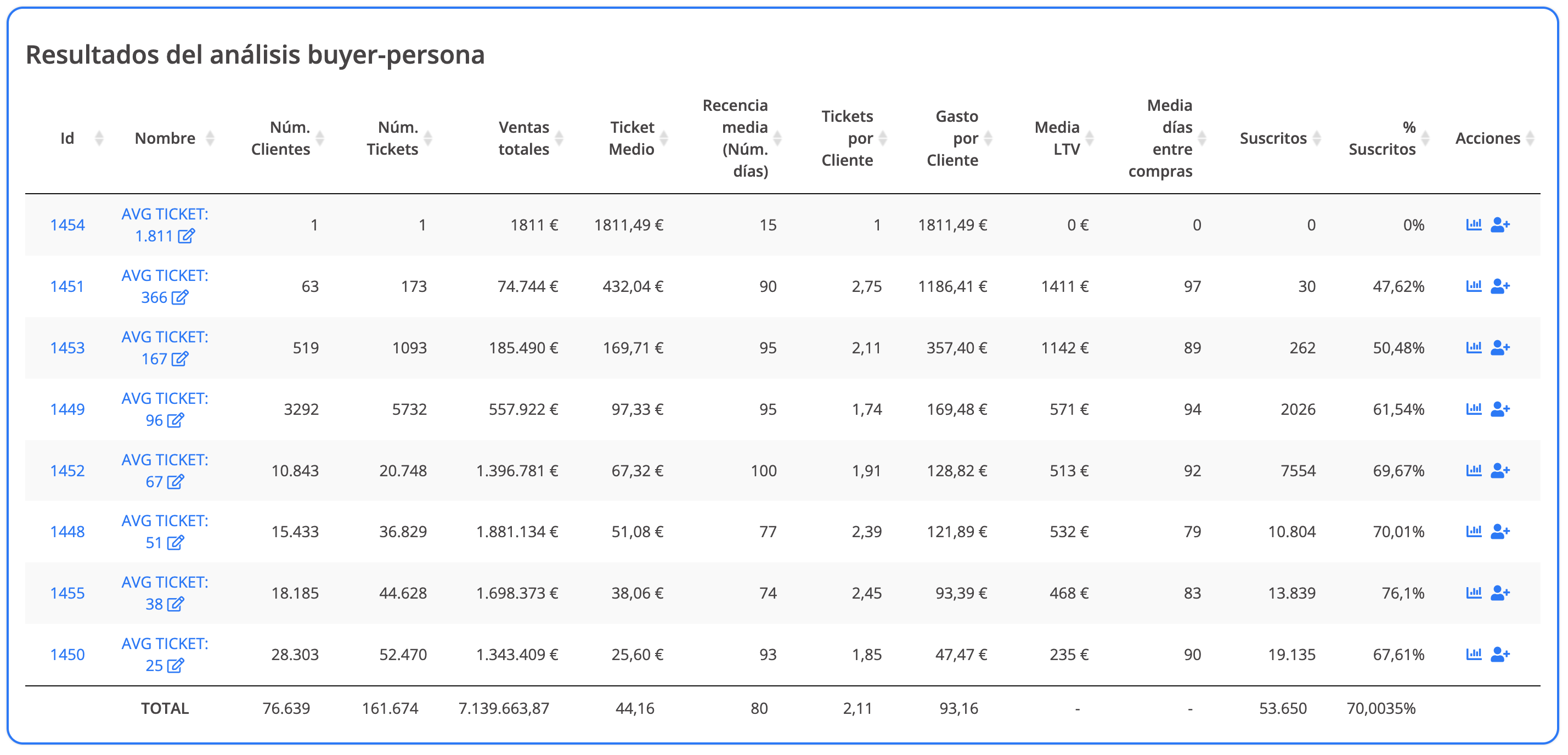
In this case, the propensity model works with the average ticket size of each customer’s purchases. This helps us understand each customer’s typical purchase size to tailor our promotions to their budget.
When working with purchase propensity oriented toward price sensitivity, it’s very interesting to see the results of each customer’s individual performance.
Check out the average RFM values of customers according to their price sensitivity:
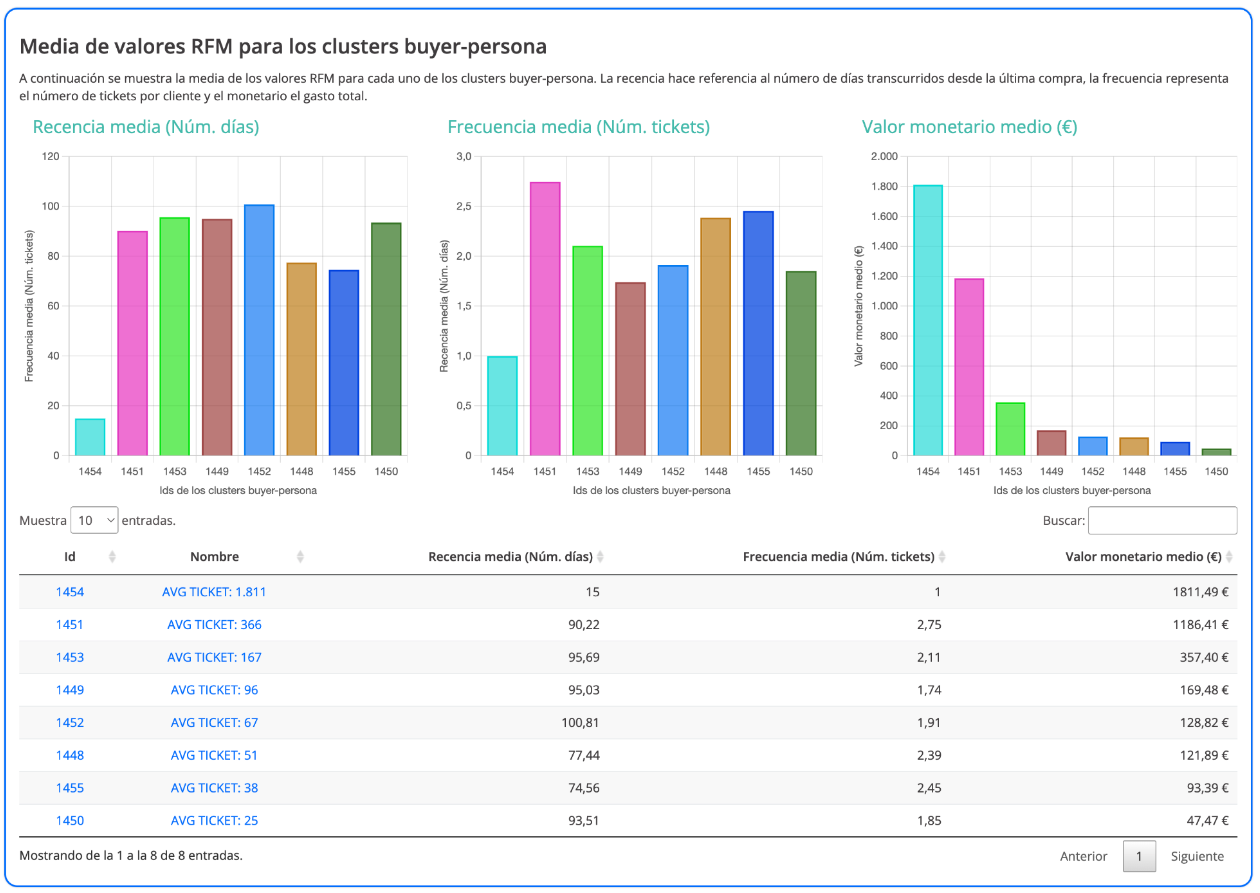
And the KPIs related to their lifecycle:
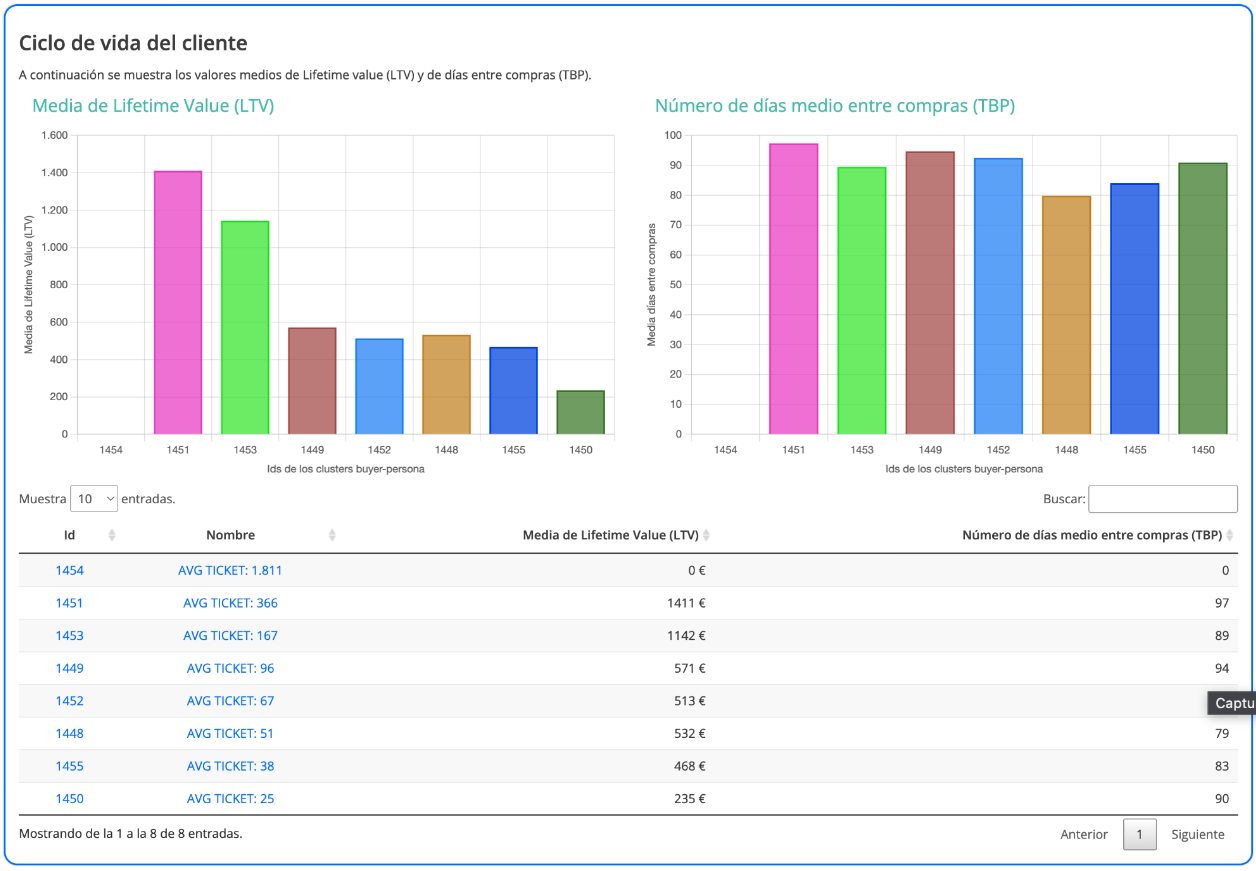
When an electronics store offers a significant discount on high-end televisions during Black Friday, consumers may be more willing to buy due to the perception of a great saving on an expensive product.
If a supermarket introduces a private label product at a lower price than popular brands, price-sensitive consumers may opt for the private label due to its lower cost, even if the quality is lower.
Personalization based on price sensitivity allows companies to address the unique preferences and needs of their customers, leading to increased customer satisfaction and sales growth.
Here are the benefits of personalizing according to price sensitivity:
- By identifying and offering discounted products to price-sensitive customers, you increase the likelihood of conversion by providing them with attractive offers.
- By tailoring communications and offers based on each customer’s price sensitivity, you show that the brand understands and meets their individual needs, fostering long-term loyalty.
- Personalizing recommendations and discounts based on price sensitivity helps reduce cart abandonment rates by addressing customers' financial concerns at the crucial moment of purchase.
- By adjusting prices and offers for different customer segments based on their price sensitivity, companies maximize their revenue by finding the right balance between sales volume and profit margin.
Promotion propensity: optimizing the strategy.
Our minds respond to offers in unique ways. Pleasepoint's promotion propensity allows you to predict which customers are most likely to respond to specific promotions.
This enables you to optimize your campaigns, target with precision, and maximize ROI. By personalizing your promotions based on propensity, you can make every offer feel uniquely tailored to each customer.
Promotion propensity refers to the likelihood that a consumer will respond positively to promotional offers, discounts, or other marketing tactics involving price reductions or additional benefits. Essentially, it shows how inclined consumers are to take advantage of special offers instead of making purchases at regular prices.
With Pleasepoint, you can automate the classification of customers based on their discount sensitivity. Check out this example:
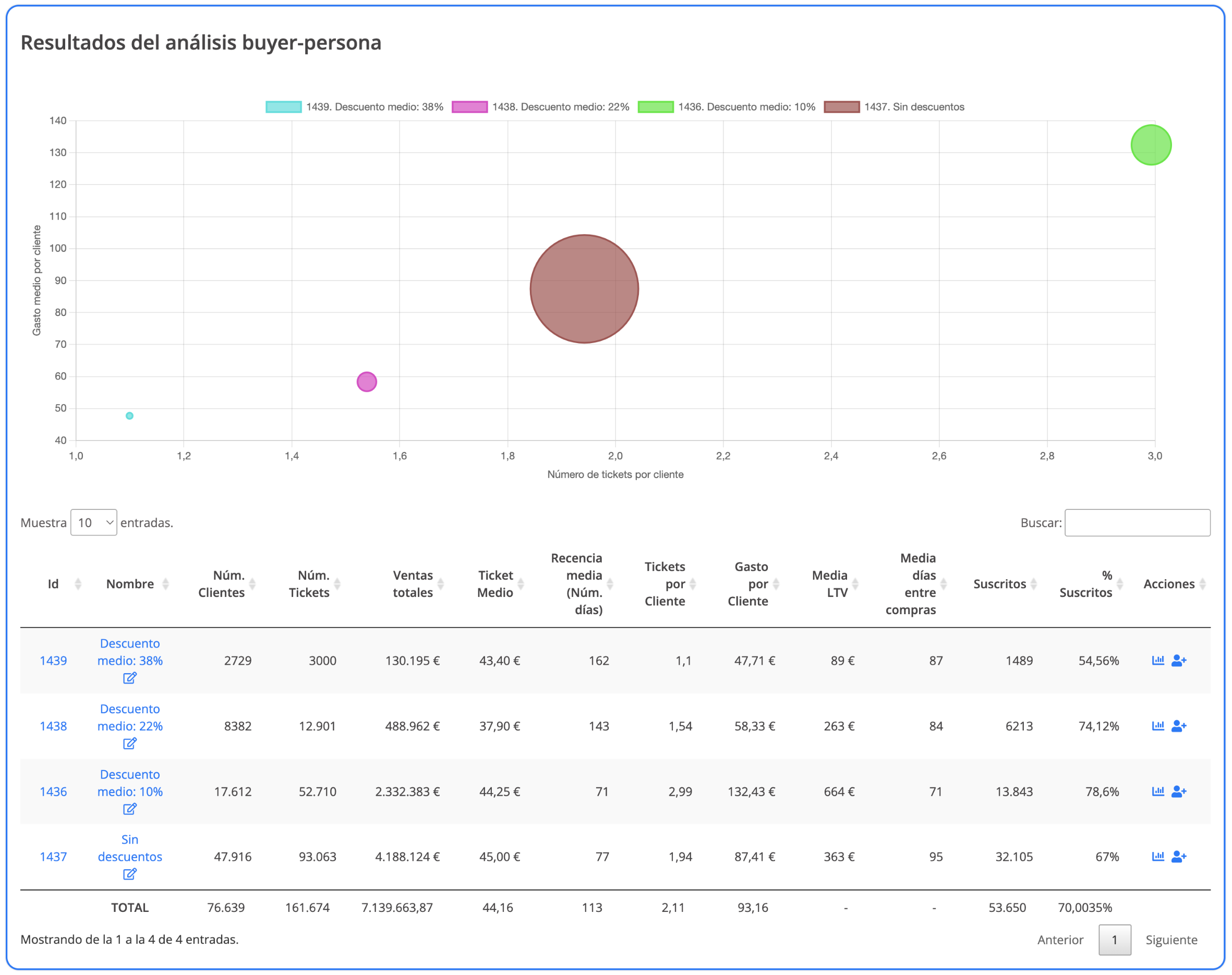
The image shows how four groups of customers have been created based on their discount sensitivity.
It’s interesting to see how the customers with the best performance are those buying with a 10% discount or no discount. Meanwhile, those buying with nearly a 48% discount are the least loyal.
Although these data respond to a specific case, this logic generally applies, meaning you’ll have to make a greater effort to retain customers with a high propensity for discounts.
Check out the RFM data for the customer clusters:
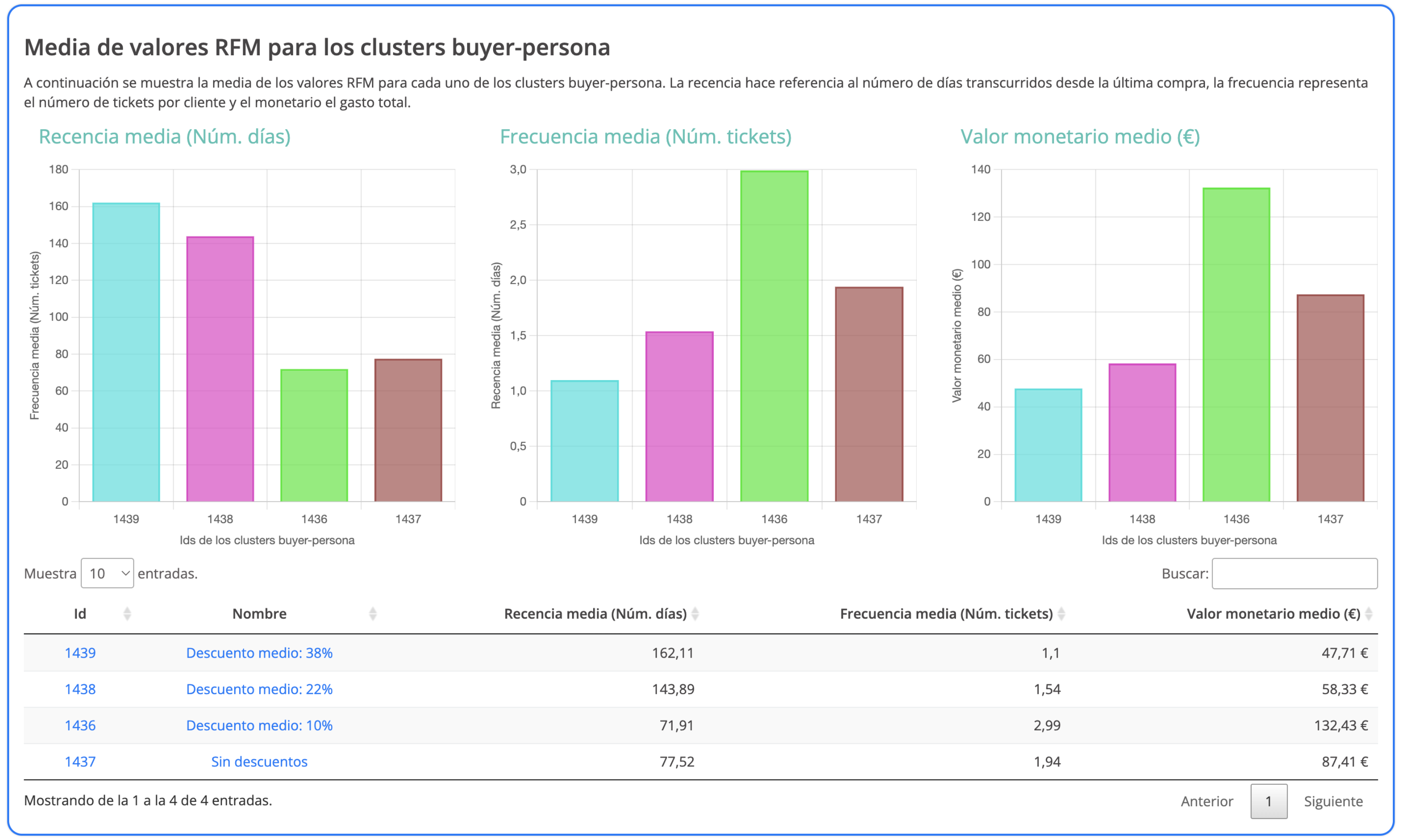
And here are the lifecycle KPIs:
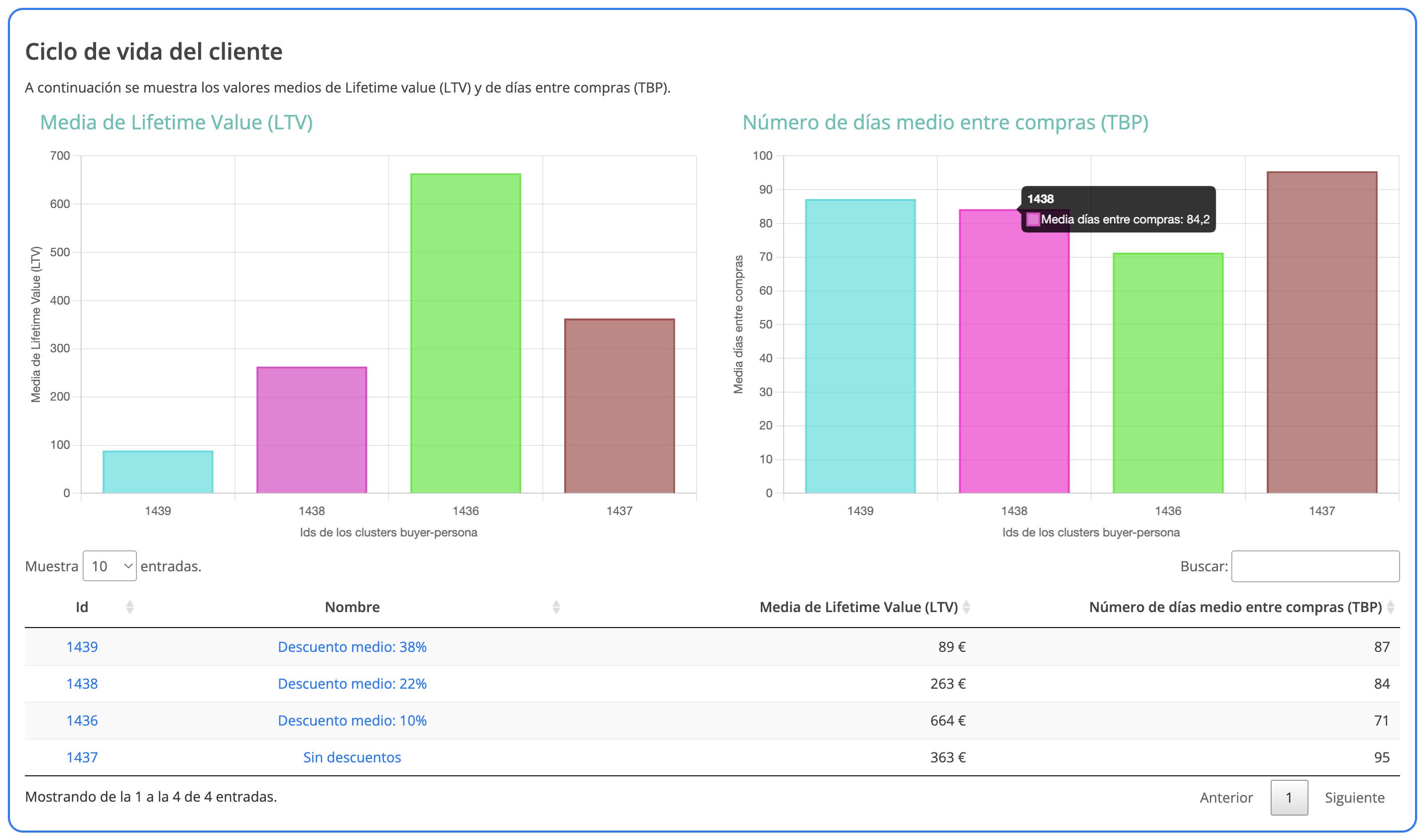
When a brand launches a new product and offers a significant discount to the first 100 buyers, consumers with high promotion propensity are more likely to take advantage of this launch offer.
Or when luxury clothing brands offer their frequent customers early access to an exclusive collection along with a free gift for purchases over a certain amount, promotion-prone consumers may be more interested in participating in this program to gain additional benefits.
Personalization based on promotion propensity allows companies to tailor their promotional strategies to maximize participation and impact among consumers who are most likely to respond positively to special offers.
Benefits of personalizing according to promotion propensity:
- By identifying and targeting customers with a high propensity for promotions, companies increase participation in promotional campaigns and achieve higher response rates.
- Personalizing promotions based on promotion propensity can generate a sense of gratitude and appreciation among customers, which in turn strengthens brand loyalty.
- By targeting promotions specifically to those most likely to respond, companies reduce noise for customers who wouldn’t take advantage of them.
- Offering promotions that align with individual preferences and purchasing habits can improve customer satisfaction by providing real and relevant value.
- Personalizing promotions based on propensity for offers can help maximize return on investment (ROI) by effectively targeting the most responsive customer segments.
How to classify customers according to purchase propensity?
What if we told you there’s an intelligent way to automate the identification of customer groups with similar purchase propensities? Welcome to the exciting Pleasepoint Buyer Persona module, a powerful AI-driven solution that allows you to optimize your strategies and achieve remarkable results.
Here are the steps to launch the customer classification process in Pleasepoint:
- Buyer Persona Analysis Name: Give a meaningful name to your analysis to have clarity on its purpose and focus.
- Use Calculations from a Previous Dataset: If you want to streamline your analysis, you can use data from previous analyses. This option allows you to modify the number of buyer persona profiles without having to start from scratch.
- Define Entities, Attributes, and Calculation Types: Select the entity (e.g., customers), attribute (such as purchase history), and calculation type (frequency, purchase value, or Boolean propensity) to obtain accurate insights.
- Transformation Options: Adjust transformation options to refine your results and ensure relevance.
- Date Filters: Define the relevant time period for your purchase propensity analysis.
- Entity Filters: Use filters to segment specific customer, product, ticket, line item, and store data.
- Number of Customer Clusters: Decide on the number of customer groups (clusters) automatically or customize it according to your needs.
- Automatic Recalculation: Enable automatic recalculation to keep your analysis updated with the latest data.
- Export Configuration: Define how you want to export the purchase propensity data model for efficient use.
- Time Windows for Statistics: Set time windows to calculate detailed statistics for each customer cluster, providing valuable information.
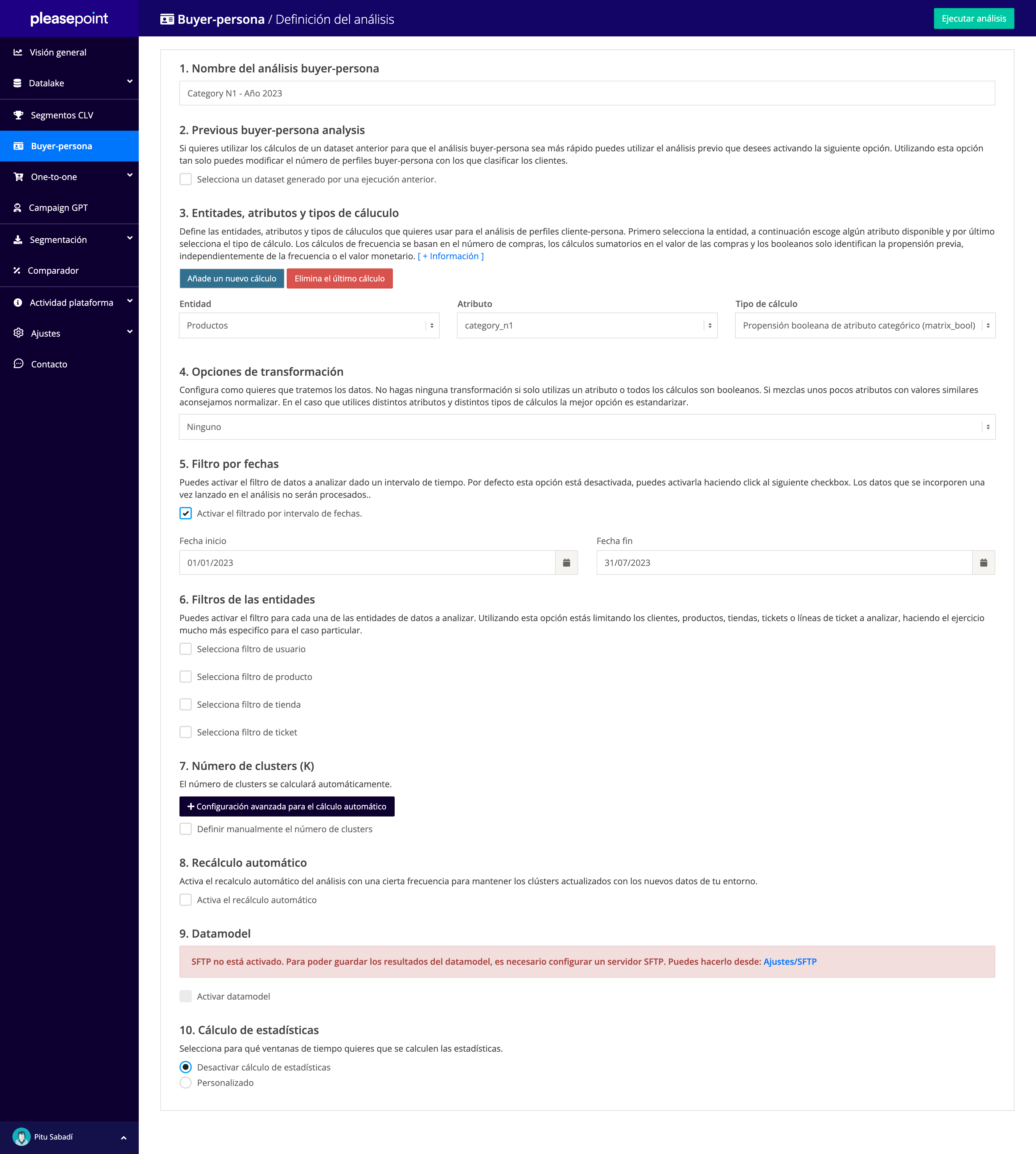
Thanks to the automation of calculations and processes that run smoothly and discreetly, you can maintain focus on what’s essential: your strategy.
While you dive into strategic decisions, the platform operates silently, generating precise and transparent results. Automation not only speeds up the process but also ensures a seamless experience, freeing you from the burden of routine tasks.
A bright path to personalization.
Personalization based on purchase propensity is a game-changer in e-commerce.
Pleasepoint offers you the advanced technology needed to put this strategy into action. By tailoring your communications and offers to individual preferences and consumption habits, you’re not only increasing your chances of conversion but also establishing a meaningful and lasting connection between your brand and your customers.
This level of personalization is what fosters loyalty, which ultimately translates into sustainable sales and exponential growth.
Download our free eBook and learn how to execute a personalization strategy based on purchase propensity and price or discount sensitivity for each of your customers. It has never been easier to start hyper-personalizing and increasing the performance of your marketing actions.
